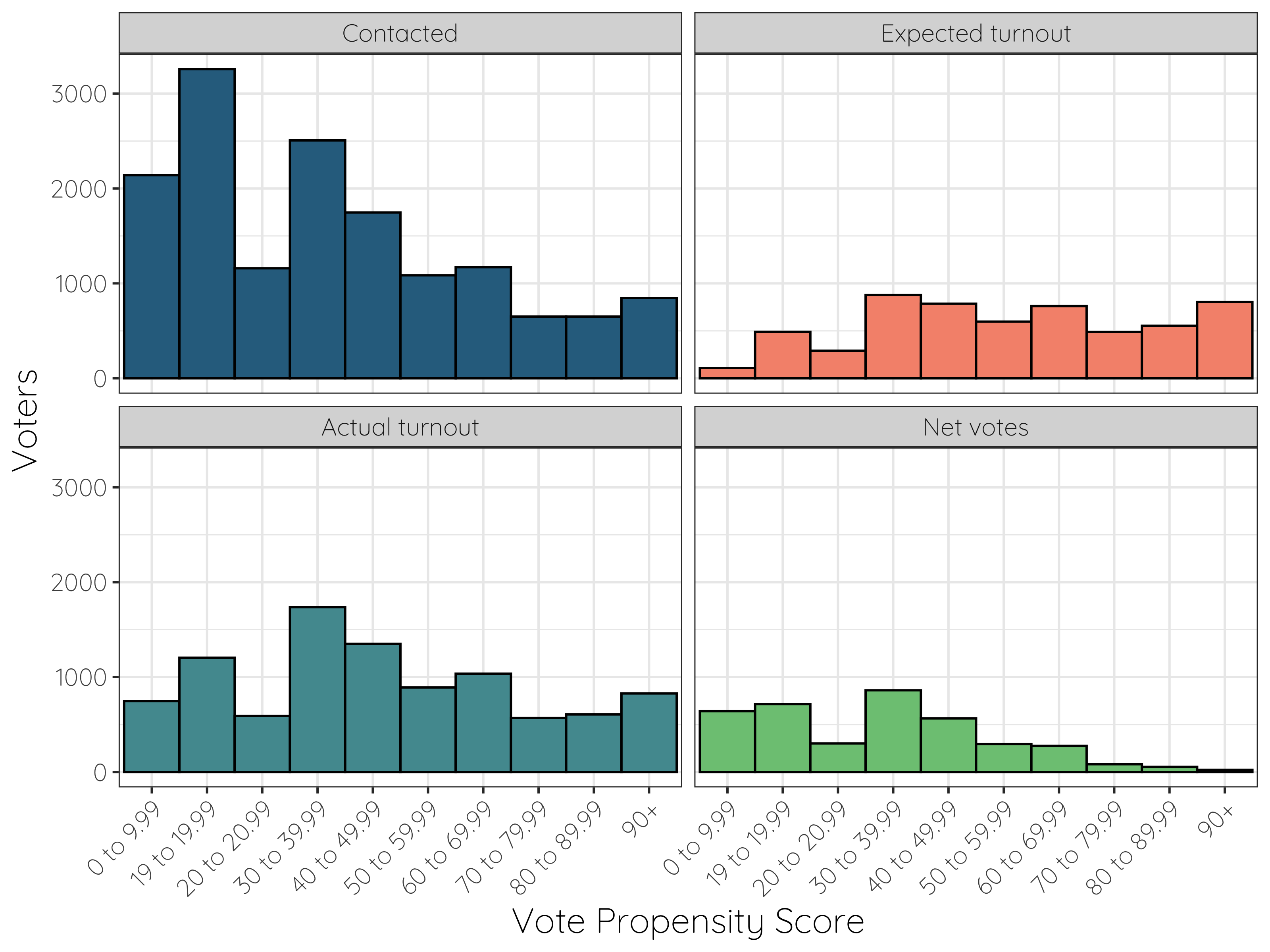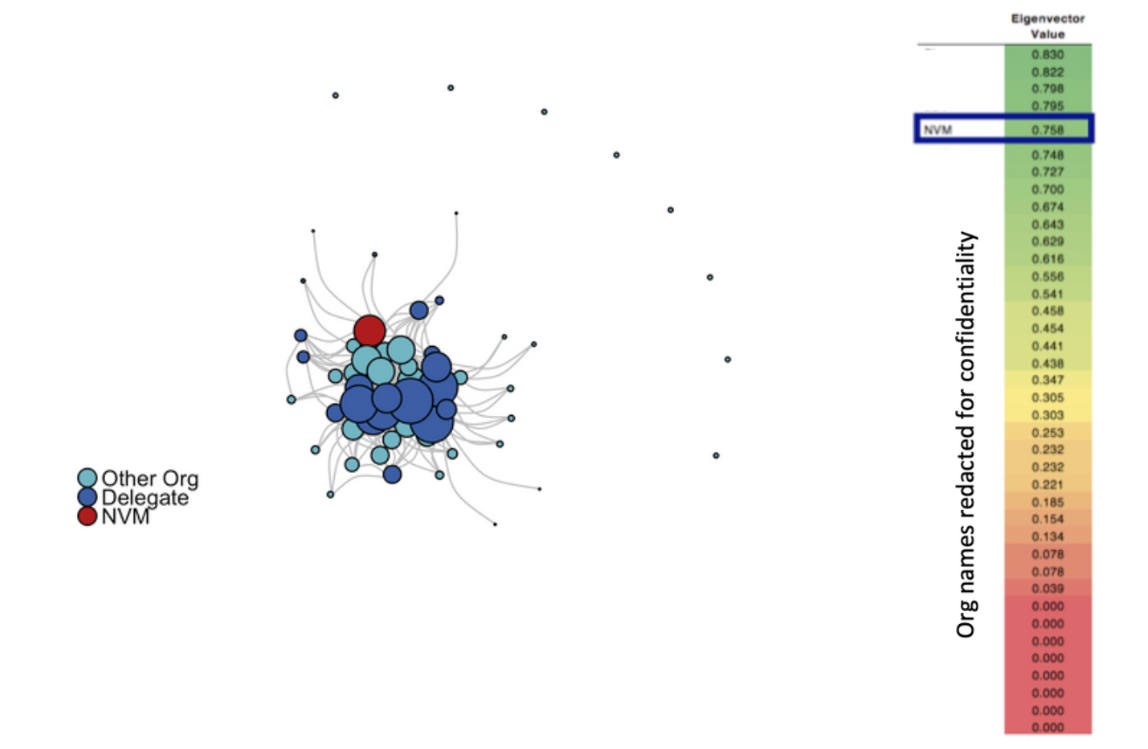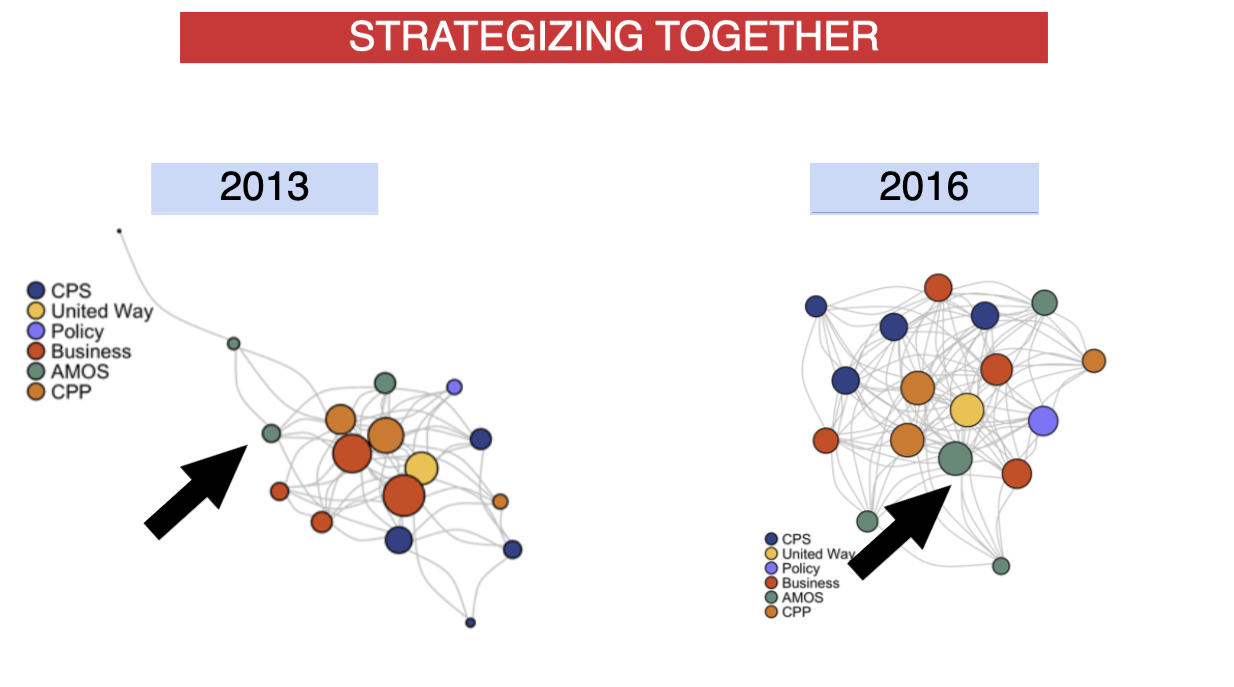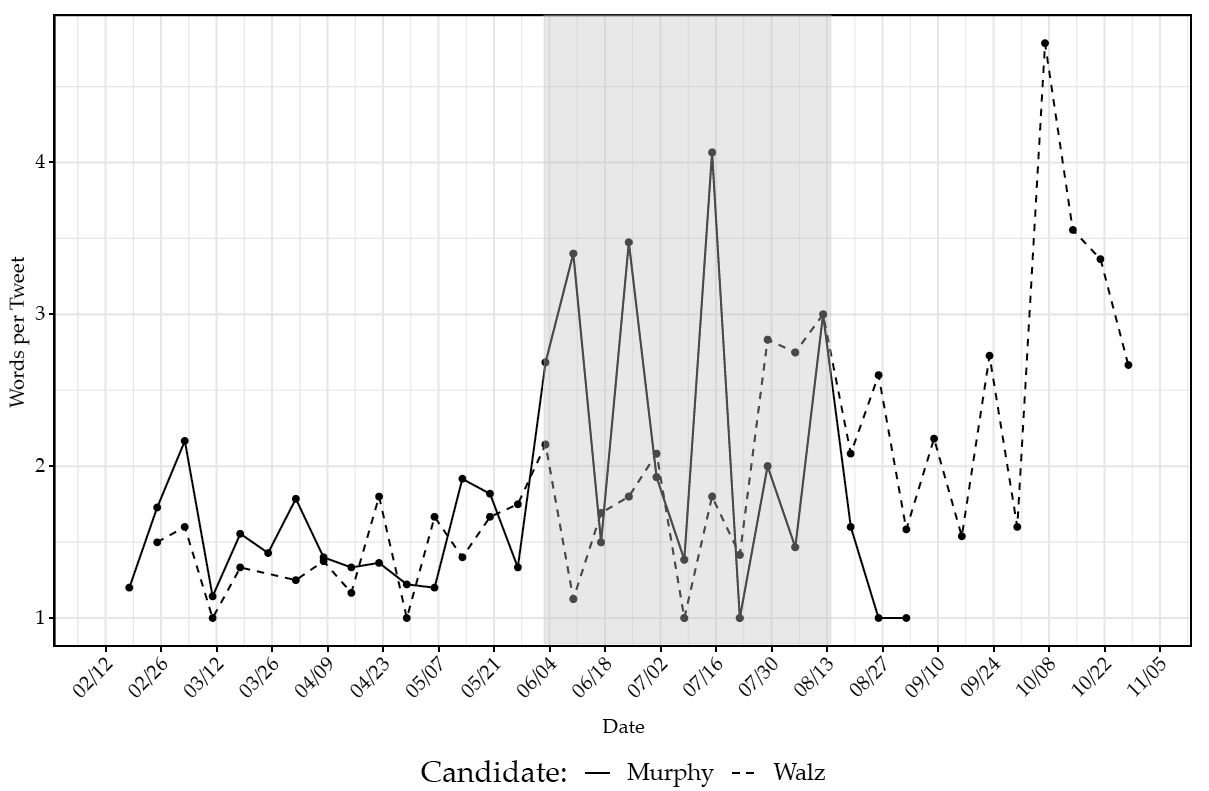Power & impact
A third area of inquiry we are exploring is how to measure program impact in power arenas beyond the electoral context. We are working in close partnership with the P3 Lab at Johns Hopkins University to develop new research methods and metrics that help make visible durable policy agenda changes, narrative shifts, and elite network dynamics. In 2021 we will also examine which member experiences increase their own sense of agency and power.
Electoral power
Faith in Action | Netting more votes
Nevada General Election | Net Votes Over Propensity Score Expectations

This analysis shows that Faith in Action’s decision to target lower propensity voters in the Nevada general election paid off. Based on their modeled scores, many of the voters with scores of less than 50 who FIA contacted (quadrant 1) were not expected to turn out (quadrant 2). After the election, an analysis of who was contacted and actually turned out showed that these voters who are almost always overlooked by other campaigns did turn out at higher rates, overperforming their expected turnout by several thousand votes.
Note: The following three analyses are drawn from Prisms of the People: Power and Organizing in 21st Century America by Hahrie Han, Elizabeth McKenna, and Michelle Oyakawa.
Shifting policy agendas
AZ Immigrant Rights Ecosystem | State-level legislative change
Decline in restrictive immigration bills over time

This analysis is based on a database of all immigration-related bills passed by the Arizona state legislature between 2005 and 2018. Comparing the seven years before the immigration rights movement ousted Russell Pearce and the seven years after, the number of restrictive billsl dropped from 34 to 17. The reduction in anti-immigrant legislation was both qualitative and quantitative; this shift happened despite both chambers growing more conservative over the same period, according to the Shor-McCarty index (a measure of the ideological composition of a legislative body).
Networks of power
New Virginia Majority | Wielding influence in the state legislature

This network graph is based on a survey of Virginia House Delagates. They were asked with which grassroots (c3 and c4) organizations they strategized in the state. NVM, shaded red, was cited by multiple delates which is why it is at the center. Using a numerical measure of relative influence known as an eigenvalue, we founnd that NVM had theh fifth most influential score compared to all other organizations. All four of the groups that had a higher score than NVM on this measure were large, nationally affiliated groups like the Sierra Club and Planned Parenthood.
The AMOS Project | Reconfiguring elite networks
Shifting power positions in the Cincinnati Preschool Promise campaign

This network analysis is also based on a survey, but in this case the relevant elite decision-making network was not elected officials but rather key business leaders, school officials (the superintendent and school board officials), funders, campaign managers, and other faith and grasroots leaders. The survey results demonstrate the AMOS Project’s executive director’s relative power position in the network in 2013 as compared to 2016, showing a marked shift: he moved from ranking as the 12th most influential node in the network to sharing the highest eigenvalue score with major business executives in the city and the campaign manager.
–
Changing narratives
Faith in Minnesota | Shifting the discourse of power targets
Change in gubernatorial candidates’ discourse

The underlying data for this graph is web-scraped Twitter feeds of Democratic gubernatorial candidates Erin Murphy and Tim Walz, two power targets ISAIAH sought to influence in their 2018 faith delegate campaign. Tracking the two candidates’ Twitter feeds allowed us to examine the extent to which they adopted the platform and organizing language of ISAIAH (determined by compiling a database of the word usage in ISAIAH’s faith delegate platform and other organizational materials). The score indicates the number of times the candidate used one of ISAIAH’s most-used 25 words, and shows a noticable increase during the campaign period when the faith delegates put pressure on the candidates, seeking their support for ISAIAH’s platform. Walz and Murphy’s baseline narratives were not consistent with the organization’s race and class narrative—that changed in June during the DFL state convention.